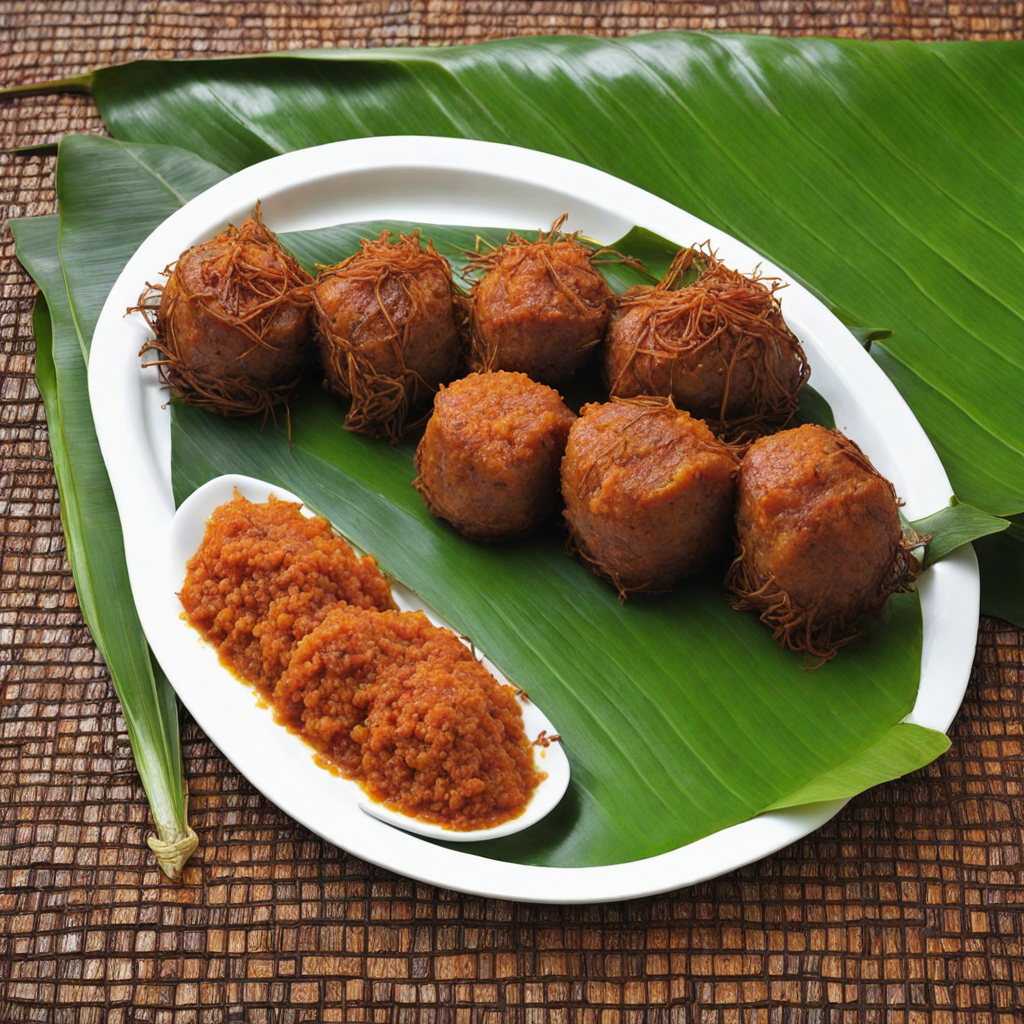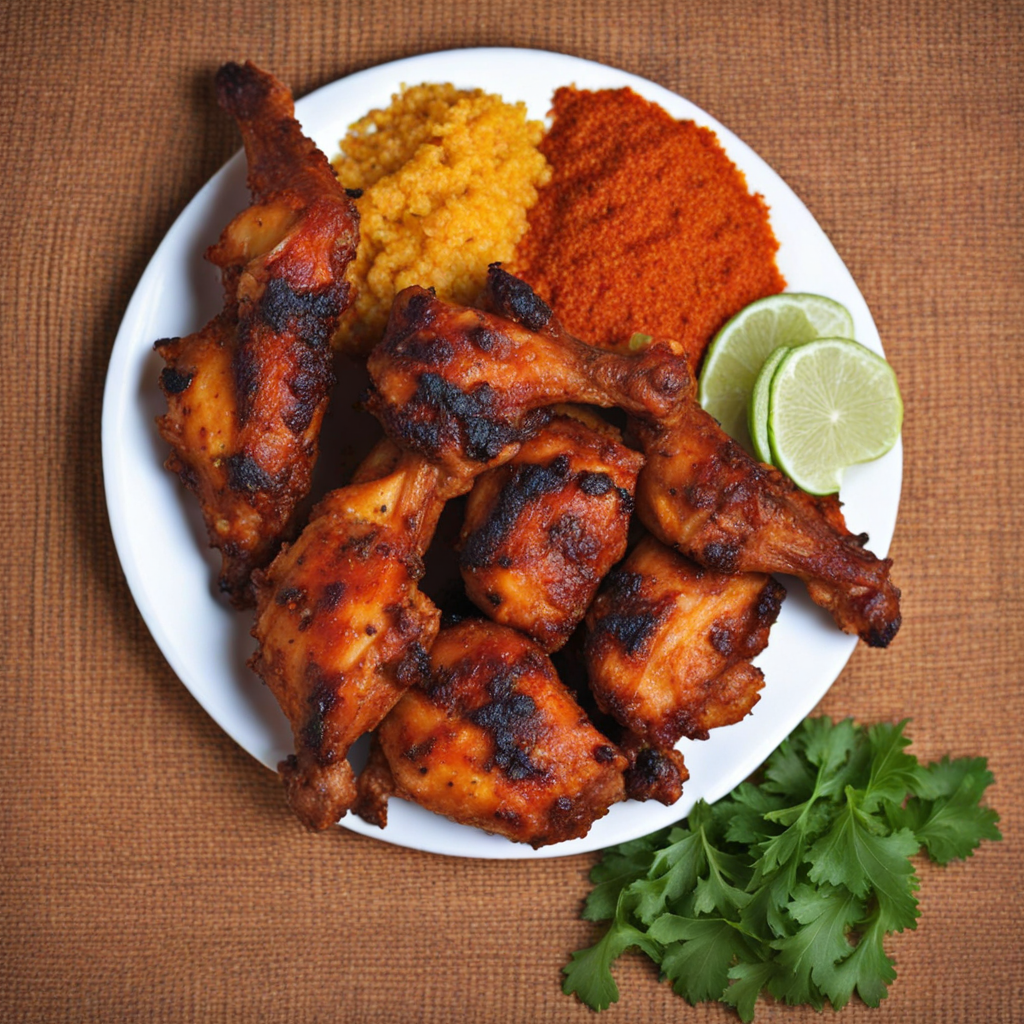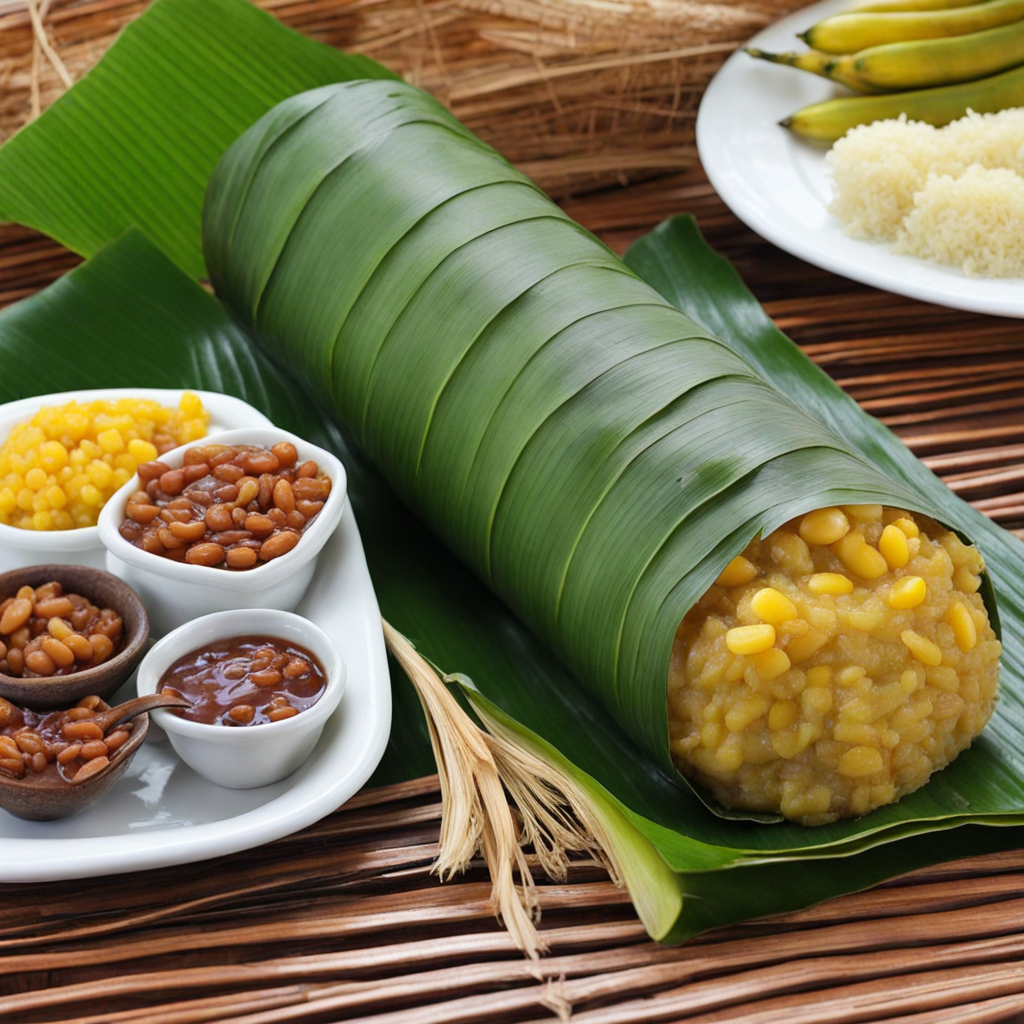Bobolo
Bobolo is a traditional Cameroonian dish made primarily from fermented cassava, giving it a unique texture and flavor profile that is both satisfying and intriguing. The cassava is peeled, washed, and then grated before being wrapped in banana leaves and steamed until it achieves a firm, dough-like consistency. The fermentation process imparts a slight tanginess, which complements its starchy base, making it a delightful accompaniment to various stews and sauces. The dish is often served in thick cylindrical shapes, resembling logs, which can be sliced and enjoyed in different portions. The versatility of Bobolo allows it to pair beautifully with a variety of Cameroonian sauces, such as the rich and spicy eru soup made from fluted pumpkin leaves or the savory groundnut (peanut) soup. The combination of the dense, slightly sour Bobolo with the flavorful, aromatic sauces creates an exciting culinary experience that transports your taste buds straight to the heart of Cameroon. Each bite offers a harmonious blend of textures and flavors, as the soft, chewy Bobolo balances the robustness of the accompanying dishes. While Bobolo is often enjoyed in a communal setting, where family and friends gather to share a meal, it is also a staple in everyday Cameroonian cuisine. Its nutritional benefits, including being gluten-free and rich in carbohydrates, make it a staple for many. This dish is not just food; it is a testament to the rich cultural heritage of Cameroon, embodying the spirit of togetherness and the celebration of local ingredients. Whether you are a seasoned food adventurer or trying something new, Bobolo promises to deliver an unforgettable taste of Cameroonian culinary tradition.
How It Became This Dish
The History of Bobolo: A Culinary Treasure from Cameroon Introduction Bobolo, a traditional dish from Cameroon, embodies the rich culinary heritage of the country. As a staple food, it reflects the local agricultural practices, cultural significance, and the dynamic history of the regions in which it is consumed. This dish, made primarily from fermented cassava, has evolved over time, intertwining with the social and economic fabric of Cameroonian life. Origins of Bobolo Bobolo traces its roots to the Bantu-speaking peoples of Central and West Africa, where cassava cultivation began thousands of years ago. The plant was domesticated in South America and brought to Africa via the transatlantic slave trade and later via the Portuguese trading routes. Its adaptability to various climates and soils made it an essential crop in Africa. In Cameroon, cassava became a fundamental part of the diet, particularly in the humid tropical regions. The method of preparing Bobolo involves peeling and fermenting cassava. The fermentation process not only enhances the flavor but also helps to detoxify the cassava, which can be toxic in its raw state. The fermented cassava is then wrapped in banana leaves and steamed, resulting in a smooth, dense, and slightly tangy cake. This technique showcases the ingenuity and resourcefulness of the local communities that developed various methods to process cassava into nutritious food. Cultural Significance Bobolo holds a place of honor in Cameroonian society. It is more than just a food item; it is a symbol of hospitality and community. Traditionally, Bobolo is served during communal gatherings, celebrations, and special occasions. The dish is often accompanied by a variety of sauces, stews, or grilled meats, making it a versatile component of any meal. In the Beti, Bassa, and other ethnic groups of Cameroon, Bobolo is often a part of the traditional fare during important ceremonies, such as weddings and festivals. The act of sharing Bobolo among friends and family strengthens social bonds and fosters a sense of community. In this way, Bobolo transcends its status as mere sustenance; it becomes a vessel for cultural expression and social cohesion. Moreover, Bobolo is often associated with the concept of “home.” For many Cameroonians, it evokes memories of family gatherings and communal feasts. The preparation of Bobolo is often a family affair, with members coming together to peel, ferment, and wrap the cassava. This collaborative effort not only reinforces family ties but also serves to pass on culinary traditions from one generation to the next. Development Over Time The evolution of Bobolo reflects broader socio-economic changes in Cameroon. As urbanization increased in the late 20th century, traditional farming practices began to decline, leading to a shift in dietary habits. However, the demand for Bobolo remained strong, prompting adaptations in its preparation and consumption. In urban areas, where time constraints and busy lifestyles prevail, pre-packaged Bobolo has emerged. This convenience food allows busy city dwellers to enjoy traditional flavors without the time-consuming process of preparation. The rise of street food culture in cities like Douala and Yaoundé has also popularized Bobolo, making it more accessible to a younger generation who might not be familiar with its traditional preparation methods. Modern technology has further influenced the production of Bobolo. The use of food processors and steamers has streamlined the preparation process, reducing the labor involved in making this beloved dish. Additionally, the introduction of cassava varieties that are more resistant to pests and diseases has ensured a steady supply of this vital ingredient, allowing Bobolo to remain a staple even amid agricultural challenges. The global interest in African cuisines has also played a role in the resurgence of traditional dishes like Bobolo. As chefs and food enthusiasts explore the diverse flavors of African food, Bobolo has found its way onto international menus, promoting Cameroonian culture on a global stage. With this increased visibility, Bobolo has become a point of pride for many Cameroonians, who see it as a representation of their heritage. Regional Variations and Pairings While the core preparation of Bobolo remains consistent, regional variations exist that reflect local tastes and ingredients. In the coastal regions, Bobolo is often served with fish or seafood stews, enhancing the dish’s flavor profile. In the northern regions, where spicy dishes are favored, Bobolo may be accompanied by fiery pepper sauces or meat dishes, showcasing the regional culinary diversity within Cameroon. Moreover, side dishes that complement Bobolo vary across communities. For instance, it is commonly served with Ndole, a rich stew made from bitter leaves and groundnuts, or with a tomato and onion sauce that adds acidity and depth to the meal. These pairings not only enhance the dining experience but also highlight the interconnectedness of different dishes within Cameroonian cuisine. Conclusion Bobolo is more than a simple food item; it is a reflection of Cameroonian culture, history, and community. From its origins in the ancient practices of cassava cultivation to its modern adaptations in urban settings, Bobolo has stood the test of time, evolving while retaining its cultural significance. As it continues to be enjoyed by generations, Bobolo remains a cherished dish that brings people together, sustains traditions, and embodies the essence of Cameroonian identity. In a world where culinary traditions are often lost to globalization, Bobolo serves as a reminder of the importance of preserving food heritage. It tells the story of resilience, innovation, and the deep connections that food forges among people. As Cameroon continues to navigate the complexities of modern life, Bobolo will undoubtedly remain a beloved staple, a symbol of home, and a celebration of the country’s rich culinary legacy.
You may like
Discover local flavors from Cameroon







